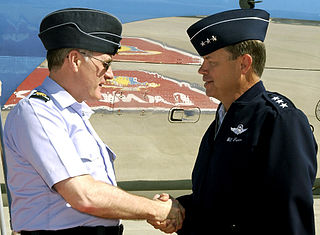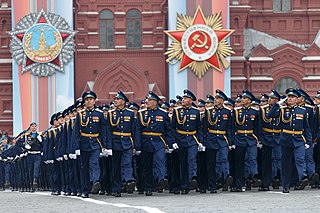History
Vanguard Industries, Inc. was founded in New York City in 1918 by Mr. Bernard Gershen. Arriving in the US in 1903, Bernard was a tailor who found work right on the piers of Brooklyn, NY at the Navy Yard, where Bernard soon began to specialize in sewing the gold lace onto the jackets of the ships’ captains and crew as they earned promotions. At the end of World War I, Sam Weisberg, whose business was selling buttons to Navy personnel, approached Mr. Gershen with the idea of forming their own company. Mr. Weisberg would specialize in buttons and other metal items, and Bernard would specialize in lace and other hand-sewn items.
From 1918 until the outbreak of [World War II], Vanguard was a supplier of insignia and accoutrements to the U.S. Navy and employed no more than ten people. With World War II looming in 1941, Vanguard responded to the dramatic increase in demand for military insignia by expanding to support all branches of the U.S. armed forces.
In 1985, Vanguard expanded to Carlsbad, California when it purchased the Wolf-Brown Corporation. Several years later another branch office opened in Kaneohe, Hawaii. In November 1996, Vanguard relocated its East Coast Headquarters to Norfolk Virginia in order to better support their military customers.
In July 2000, Vanguard purchased all the assets of N. S. Meyer, Inc. of New York City, which had been in operation since 1868. In 2009, Vanguard donated N. S. Meyer's vast collection of military insignia to the National Museum of the United States Army. Vanguard continues to be the Preeminent Manufacturer and Distributor of Military Insignia for all Branches of the US Armed Forces.
The United States Armed Forces are the military forces of the United States. The armed forces consist of six service branches: the Army, Marine Corps, Navy, Air Force, Space Force, and Coast Guard. All six armed services are among the eight uniformed services of the United States.
The Meritorious Unit Commendation is a mid-level unit award of the United States Armed Forces. The U.S. Army awards units the Army MUC for exceptionally meritorious conduct in performance of outstanding achievement or service in combat or non-combat, the U.S. Navy and U.S. Marine Corps award units the Navy MUC for valorous or meritorious achievement or service in combat or non-combat, and the U.S. Coast Guard awards units the Coast Guard MUC for valorous or meritorious achievement or service not involving combat.

The Institute of Heraldry, officially The Institute of Heraldry, Department of the Army, is an activity of the Administrative Assistant to the Secretary of the Army solely responsible for furnishing heraldic services to the President of the United States and all federal government agencies. Title 18 of the United States Code, Chapter 33, Section 704 and Title 32 of the Code of Federal Regulations, Part 507 permit the institute to issue directives on how military insignia are displayed, the criteria for issuance, and how insignia will be worn on military uniforms.
Listed in the table below are the insignia—emblems of authority—of the British Army. Badges for field officers were introduced in 1810 and the insignia was moved to the epaulettes in 1880. On ceremonial or parade uniforms these ranks continue to be worn on the epaulettes, either as cloth slides or as metal clips, although on the modern 'working dress' they are usually worn as a cloth slide on the chest. Although these insignia apply across the British Army there is variation in the precise design and colours used and it can take some time to become familiar with them all.

The diver insignia are qualification badges of the uniformed services of the United States which are awarded to servicemen qualified as divers. Originally, the diver insignia was a cloth patch decoration worn by United States Navy divers in the upper-portion of the enlisted service uniform's left sleeve during the first part of World War II, when the rating insignia was worn on the right sleeve. When enlisted rating insignia were shifted to the left sleeve in late World War II, the patch shifted to the upper right sleeve. The diving patch was created during World War II, and became a breast insignia in the late 1960s.

Mess dress uniform is the most formal type of evening-wear uniform used by military personnel, police personnel, and other uniformed services members. It frequently consists of a mess jacket, trousers, white dress shirt and a black bow tie, along with orders and medals insignia. Design may depend on regiment or service branch, e.g. army, navy, air force, marines, etc. In modern Western dress codes, mess dress uniform is the supplementary alternative equivalent to the civilian black tie for evening wear. Mess dress uniforms are typically less formal than full dress uniform, but more formal than service dress uniform.

The Parachutist Badge, also commonly referred to as "Jump Wings", is a military badge of the United States Armed Forces. Some services, such as the Marine Corps, officially refer to it as an insignia instead of a badge. The United States Space Force and United States Coast Guard are the only branches that do not award the Parachutist Badge, but their members are authorized to receive the Parachutist Badges of other services in accordance with their prescribed requirements. The DoD military services are all awarded the same Military Parachutist Badge. The U.S. Army and U.S. Air Force issue the same Senior and Master Parachutist Badges while the U.S. Navy and U.S. Marine Corps issue the Navy and Marine Corps Parachutist Insignia to advanced parachutists. The majority of the services earn their Military Parachutist Badge through the U.S. Army Airborne School.

Obsolete badges of the United States military are a number of U.S. military insignia which were issued in the 20th and 21st centuries that are no longer used today. After World War II many badges were phased out of the United States Armed Forces in favor of more modern military badges which are used today.

A side cap is a military cap that can be folded flat when not being worn. It is also known as a garrison cap or flight cap in the United States, wedge cap in Canada, or field service cap in the United Kingdom; or in vulgar slang as a cunt cap or piss cutter. In form the side cap is comparable to the glengarry, a folding version of the Scottish military bonnet. It has been associated with various military forces since the middle of the 19th century, as well as various civilian organizations.

A peaked cap, peaked hat, service cap, barracks cover, or combination cap is a form of headgear worn by the armed forces of many nations, as well as many uniformed civilian organisations such as law enforcement agencies and fire departments. It derives its name from its short visor, or peak, which was historically made of polished leather but increasingly is made of a cheaper synthetic substitute.

A military chaplain ministers to military personnel and, in most cases, their families and civilians working for the military. In some cases, they will also work with local civilians within a military area of operations.

Full dress uniform, also known as a ceremonial dress uniform or parade dress uniform, is the most formal type of uniforms used by military, police, fire and other public uniformed services for official parades, ceremonies, and receptions, including private ones such as marriages and funerals. Full dress uniforms typically include full-size orders and medals insignia. Styles tend to originate from 19th century uniforms, although the 20th century saw the adoption of mess dress-styled full-dress uniforms. Designs may depend on regiment or service branch. In Western dress codes, full dress uniform is a permitted supplementary alternative equivalent to the civilian white tie for evening wear or morning dress for day wear – sometimes collectively called full dress – although military uniforms are the same for day and evening wear. As such, full dress uniform is the most formal uniform, followed by the mess dress uniform.

These are the official Royal Navy Officer ranks ordered by rank. These ranks are now part of the NATO/United Kingdom ranks, including modern and past.
United States Army commissioned officers rank insignia in use today.

A five-star rank is the highest military rank in many countries. The rank is that of the most senior operational military commanders, and within NATO's standard rank scale it is designated by the code OF-10. Not all armed forces have such a rank, and in those that do the actual insignia of the five-star ranks may not contain five stars. For example: the insignia for the French OF-10 rank maréchal de France contains seven stars; the insignia for the Portuguese marechal contains four gold stars. The stars used on the various Commonwealth of Nations rank insignias are sometimes colloquially referred to as pips, but in fact either are stars of the orders of the Garter, Thistle or Bath or are Eversleigh stars, depending on the wearer's original regiment or corps, and are used in combination with other heraldic items, such as batons, crowns, swords or maple leaves.

The United States Army Chaplain Corps (USACC) consists of ordained clergy of multiple faiths who are commissioned Army officers serving as military chaplains as well as enlisted soldiers who serve as assistants. Their purpose is to offer religious church services, counseling, and moral support to the armed forces, whether in peacetime or at war.

The executive curl, or the "Elliot's Eye", is the name given to the ring above a naval officer's gold lace or braid insignia. It originated with the Royal Navy.
Between 1943 and 1955, the ranks and insignia of the Soviet Armed Forces were characterised by a number of changes, including the reintroduction of rank insignia badges and the adoption of a number of higher ranks.

The Obr.69 is a Soviet military uniform introduced in 1969 to replace the Gymnastyorka style uniforms, which had remained virtually unchanged since World War II. It was used by all branches of the Soviet Armed Forces aside from the Soviet Navy. The uniform was produced in a wide variety of variants, and remained standard issue until finally replaced by the Afghanka uniform in 1988, though the uniform remained in use with some Soviet successor states well after the fall of the Soviet Union.













